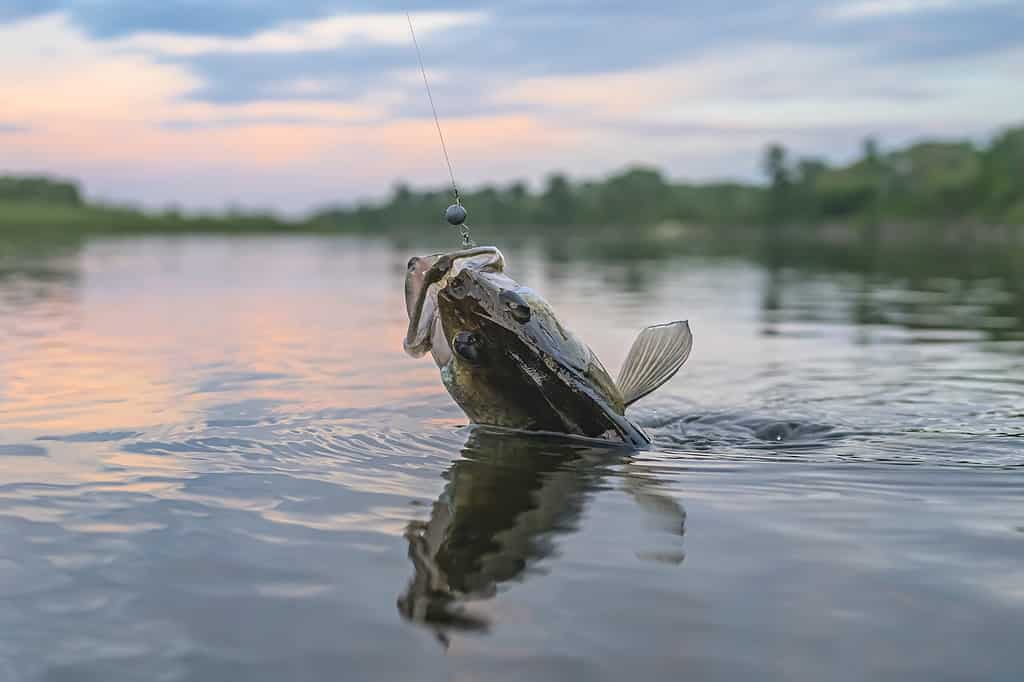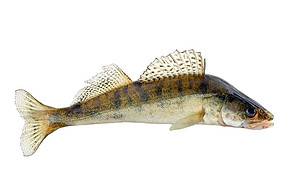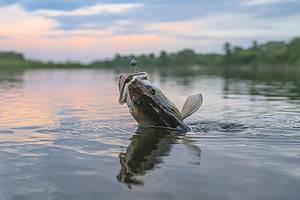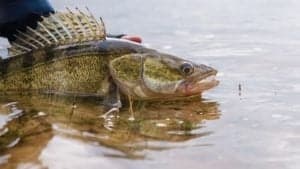Ohio is arguably home to the greatest fishing experiences in the United States. The Buckeye State has plenty of places for anglers to try their luck, including several dozen lakes, rivers, and the massive Lake Erie on its northern border. Fishers in Ohio enjoy catching walleye, and they have caught a few large specimens over the years. Discover the largest walleye ever caught in Ohio! Find out how big it was, where it was caught, and how it compares to the U.S. record!

Information about the Walleye Species

Walleye are among the most popular game fish in North America.
©iStock.com/FedBul
Walleye fish (Sander vitreus) get their name from their unique eye structure that makes their eyes reflect light. The species is not known to get especially large. However, they can reach sizes of 2 to 3 feet when they have lived for several years. Most often, the fish weigh between 3 and 10 pounds, but they can reach weights of 20 pounds when they survive for a long time.
These fish tend to live in freshwater lakes and rivers. They prefer to stay in cool waters instead of warm ones. Moreover, these fish thrive in both shallow and deep waters, but they are more frequently found in deep waters.
Walleye are carnivorous fish that eat zooplankton when they are young. As they get older they begin to eat other fish along with snails, insects, and amphibians.
Walleye Description
The walleye species has a thin, long body. These fish have a golden color on their sides and an olive color on their backs. They also have olive-colored patterns called saddles running from the dorsal portion of their bodies to their sides. They have sharp teeth in their mouths, reflective eyes, and two dorsal fins. Despite these unique characteristics, the fish are often confused with other species.
What Was the Largest Walleye Ever Caught in Ohio?

Walleye have sharp teeth in their mouths.
©Harlan Schwartz/Shutterstock.com
The largest walleye ever caught was 16 pounds and 3.04 ounces, and it was caught in Lake Erie. The record-setting fish measured 33 inches long. An angler named Tom Haberman caught the record-setting walleye on November 23, 1999.
Apparently, he was fishing on a boat from Wave Walker Charters, about two miles off the coast of Cleveland. Interestingly, the anglers were targeting perch when Haberman caught the large walleye.
Originally, the fish weighed more. However, that weight discrepancy was because the walleye had recently eaten a small fish. After the meal was removed from the fish’s mouth, it weighed 16 pounds and 3.04 ounces.
This new fish beat the former record that weighed 15.95 pounds. The former record fish was caught in 1995.
Where Is Lake Erie on a Map?
Lake Erie is the most well-known lake in the entire state of Ohio. After all, it is one of the Great Lakes, a series of massive freshwater bodies covering about 94,500 square miles. The lake borders Ohio to the north for roughly two-thirds of its total length.
Lake Erie is easy to find on a map since it has an area of 9,940 square miles and stands out so much north of Ohio. Several large towns and even a couple of cities, including Cleveland, are on the border of Lake Erie.
Other Fish Living in Lake Erie
Walleye are hardly the only fish that live in the waters of Lake Erie. This Great Lake has a huge number of fish and various species. Some of the other fish that people try to catch in this body of water are:
- Smallmouth bass
- Common carp
- Rainbow smelt
- Brown trout
- Bigmouth buffalo
- Northern pike
- Yellow perch
- Steelhead
Over two dozen species of fish thrive in this area. More interestingly, this lake has yielded far more than just the record for the largest walleye ever caught in Ohio.
Lake Erie also holds the record for many other fish including:
- Yellow perch
- White perch
- Lake trout
- Burbot
- Chinook salmon
The lake clearly has an abundance of fish if this many state records come out of a single lake. While state records are fantastic achievements, it’s only natural to wonder how the Buckeye State’s largest walleye compares to the world record.
Was Ohio’s Record Walleye the Country’s Record?

Walleye makes for a great meal.
©Stock-vector-photo-video/Shutterstock.com
No, the largest walleye ever caught in Ohio was not the country’s record for the largest walleye ever. The biggest walleye ever caught in the United States of America weighed 25 pounds.
The monster fish was 41 inches long and had a total girth of 29 inches. This fish is the largest walleye ever caught in the world. A man named Mabry Harper caught the fish in August 1960.
However, people called into question the fish’s size. Fortunately, the fisherman and his wife got many forms of documentation about the fish’s size, including pictures along with a sworn statement from a game warden. Although the National Freshwater Fishing Hall of Fame removed the record for a time, it was later reinstated.
The largest walleye ever caught in Ohio was much smaller than the biggest ever caught in the country. Still, the large fish was a sign that Lake Erie could produce all manner of record-setting fish. The fisherman caught the walleye over two decades ago. Someone could break the record again in the future. If a large enough walleye is caught to break the record, it seems likely that the fish would also come from Lake Erie.
The photo featured at the top of this post is © FedBul/Shutterstock.com
Thank you for reading! Have some feedback for us? Contact the AZ Animals editorial team.







